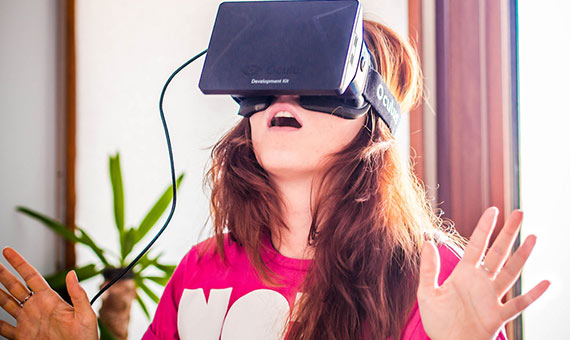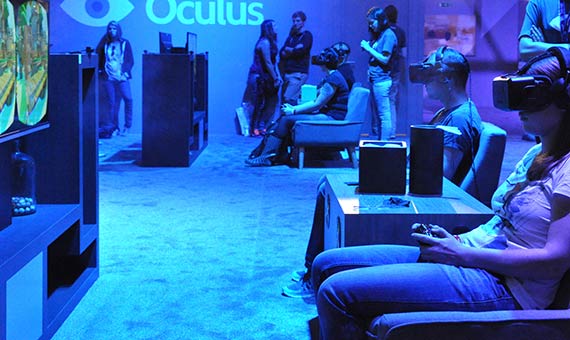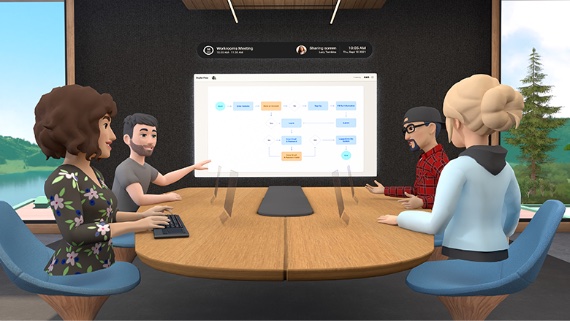In the summer of 2016, a fever broke out that affected millions of people. A videogame prompted young Iranians to challenge the bans of their government, dozens of people in New York to abandon their cars on the highway, and the French army to allocate resources to map the location of virtual creatures. The culprit of this epidemic was Pokémon GO, a mobile phone application that was installed by more than 100 million users worldwide in the first month alone.
The purpose of the game was to collect the 151 pokémon hiding in the streets, squares and parks. They could be captured even in the Pentagon and the White House. Players had to travel around their cities to find the virtual creatures, turning the real world into the playing field. Augmented reality was responsible for successfully merging these two universes. This technology and its complementary one, virtual reality, have not been limited just to Pokémon GO and they have completely revolutionized the way of playing videogames.

Niantic, the company that developed the video game, and Nintendo, which owns part of the rights to Pokémon GO, saw their share prices shoot up 76% in the first few days of the game’s launch and they earned $200 million in the first month alone. The success of the game showed the interest of users in playing in other realities. “Phenomena like Pokémon GO are what are known as killer apps, applications that manage to spread beyond a few users to become massive. These types of applications are fundamental for bringing new technologies to the general public,” Fernando Gómez, professor of virtual reality and augmented reality at IED Madrid, explains to OpenMind.
IMMERSION IN ANOTHER REALITY
But this phenomenon goes beyond the Pokémon GO bubble, which burst a few months later. It would be like trying to measure an iceberg only by its visible part. “Virtual and augmented reality have changed the paradigm of gaming. The gaming experience now involves the use of the body, interaction, entry into a virtual world, immersion in another reality,” Juan Manuel Martín Castillo, marketing director at NVIDIA Iberia, a multinational graphics card and processing company, told OpenMind.

Experts recognize that it is still too early to know the true effect that these technologies will have, but they do admit that the impact is already “undeniable”. Large technology companies such as Google, Samsung, Amazon and Facebook have been betting on them for years, which provides another indication as to the importance that these trends are acquiring. For example, in the United States, sales of virtual and augmented reality glasses are expected to quadruple between 2021 and 2025, according to the Consumer Technology Association (CTA), the association of US technology companies. In addition, the agency forecasts that spending on gaming software will grow from $47.6 billion in 2021 to $59 billion in 2025.
ENDLESS GAMING POSSIBILITIES
“How many of us will climb Everest? I doubt very many of us will. But all of us can do that using virtual reality from the comfort of our living room,” said Intel CEO Brian Krzanich in his keynote speech at CES 2017 in Las Vegas. The possibilities of gaming seem endless. You can be paragliding over the Grand Canyon in Colorado and the next minute balancing, one foot after the other, between the skyscrapers of New York. And then, suddenly, you’re surrounded by bloody zombies slowly creeping towards you.
“It’s possible to fulfill all the gamer fantasies: travelling to fantastic worlds, role-playing games or getting superpowers,” says Gomez, who is also technology director for the virtual reality studio Isostopy. “In addition, it is played in a much more intense way, without the protection that being behind a monitor provides. Now, the user must only use not only a mouse and a keyboard, but his whole body.”

But the future is not going to stay there. Big technology firms like Intel, formerly specialized in processors, have already caught the next big wave: merged reality, a mix between augmented and virtual. With this new technology, the elements of reality cannot be distinguished from digital ones. The furniture of the room in which the player is located is integrated into the videogame. Thus, if it deals with spaceships —like the one developed by Intel— these elements are mimicked with the environment and may look like gates or control panels. You must avoid them or use them, but your house is already part of a distant galaxy.
These technologies, especially virtual reality, were developed directly with the world of videogames in mind —as Gómez explains— but their applications have surpassed the boundaries of gaming. “There are emerging virtual experiences focused on learning, treating phobias and trauma, or meditation,” he describes. Entertainment in another reality can also become a therapy for the user.
THE METAVERSE PUSHES BOUNDARIES
In fact, virtual reality is also the gateway to the metaverse, a kind of virtual space in which internet users can not only be entertained, but can also interact with avatars, receive training and even buy products and services. More and more companies are developing sophisticated virtual reality headsets, as well as advanced haptic wearables—which attempt to simulate the sense of touch in these virtual worlds—cameras and all kinds of sensors. Among the big tech companies committing to the metaverse, Meta, the parent company of Facebook, Instagram and WhatsApp, stands out. Other companies are also building their own platforms. One example is Linden Lab and its Second Life platform, a virtual world that allows users to interact with thousands of avatars.
But the metaverse goes far beyond gaming. Its advocates stress the infinite possibilities of these virtual universes in relation to social interactions, entertainment or even in the business sphere. In theory, the ways of interacting will be much more realistic and immersive thanks to the metaverse. As Meta CEO Mark Zuckerberg says: “When I send my parents a video of my kids, they’re going to feel like they’re right in the moment with us, not peering through a little window. When you play a game with your friends, you’ll feel like you’re right there together in a different world, not just on your computer by yourself. And when you’re in a meeting in the metaverse, it’ll feel like you’re right in the room together, making eye contact having a shared sense of space and not just looking at a grid of faces on a screen.”

In the education sector, the metaverse aims to revolutionize online learning. For example, by taking learners back to the year 300 BC to explore Greek culture, as the report A whole new world: Education meets the metaverse describes: “Carts buzz by them, traders in marketplaces surround them and high atop the hill, they see—with their own eyes—the temples of the gods and the people who worship them.”
If there is one thing that characterizes the metaverse, it is precisely its potential to create immersive experiences, an aspect that many businesses are looking to capitalize on. While the music sector has begun to organize some concerts in the metaverse without much success, some brands and sports teams are also experimenting with the creation of virtual worlds. One such example is Manchester City, which has partnered with Sony to replicate its stadium in virtual reality.
“The prime focus is to create a global online community—unlike anything fans have encountered before,” says Sony. The Japanese company explains that it will “not only be a realistic rendering of the stadium in Manchester, UK—it will also be a point of access to unique virtual experiences for fans, from fully customizable avatars to next-generation interactive loyalty programs, all new methods of expressing their fandom.”
Some companies have already started using such technologies in sales processes, customer interactions and meetings, according to the 2021 XR Enterprise Trends report. Last year Meta introduced Horizon Workrooms, an application that allows people to come together to work in the same virtual room, regardless of where they are physically located, and promises to be a step towards building the metaverse. The company aims to harness the potential of virtual reality to “brainstorm or whiteboard an idea, work on a document, hear updates from your team, hang out and socialize, or simply have better conversations that flow more naturally.”
A TECHNOLOGY FOR THE MASSES?
Despite all the hype about the metaverse, it is still only a concept that is just beginning to lay its foundations. For this technology to be successful with users, more sophisticated devices at a more affordable price are needed. For example, as Zuckerberg states, “there is still a lot of technology that needs to be developed and minimized to launch the augmented reality glasses that we all envision for the future.”

While a number of companies have invested huge amounts of money to make the metaverse a reality, some experts point out that these virtual spaces in which to entertain, work or learn are getting closer and closer. Steve Koenig, vice president of research at CTA predicts that over the next 10 to 20 years “immersive digital experiences will become inextricably linked with our physical reality.” We will still have to wait to see if all the promises of the metaverse are finally fulfilled and to what extent this technology becomes a mass product or not.
Comments on this publication